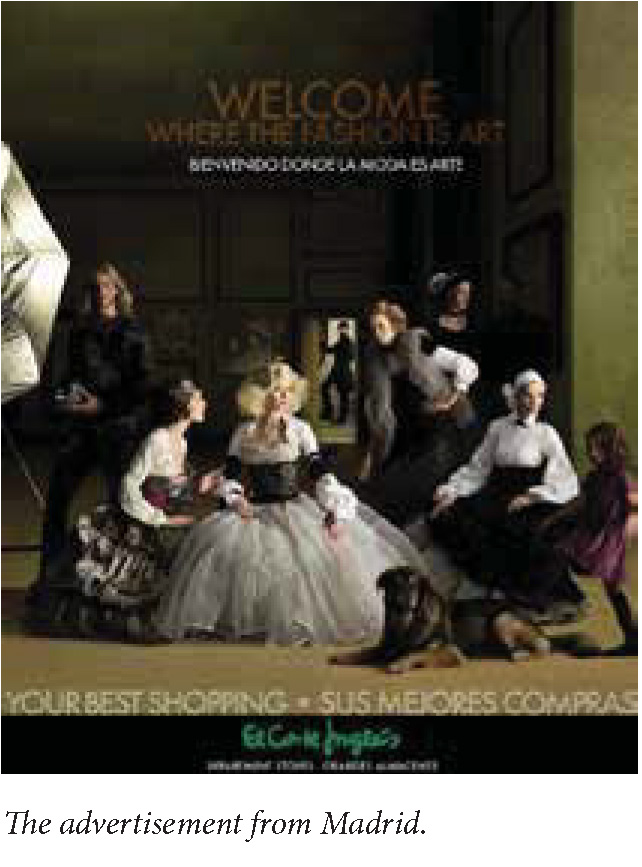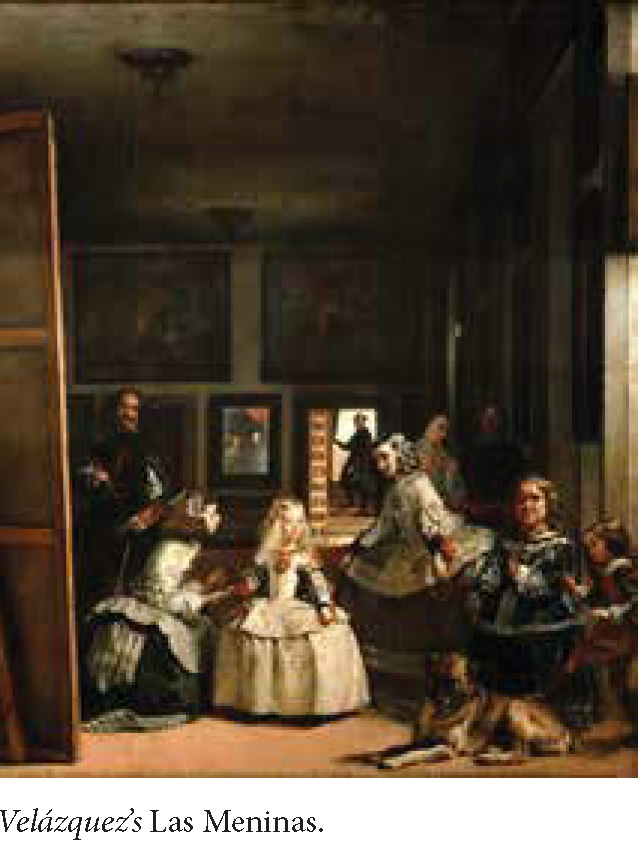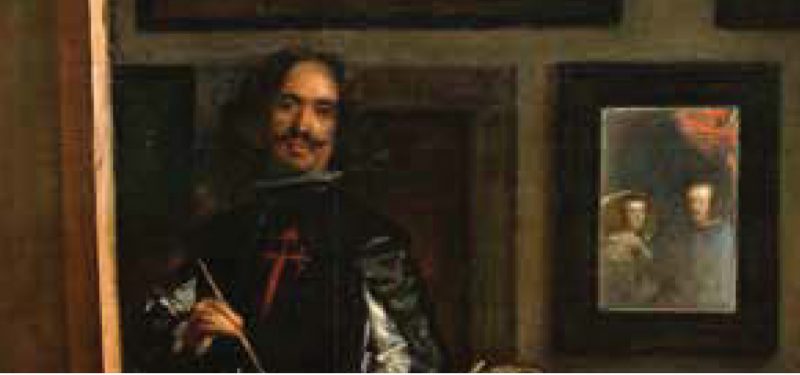Take a look at this entirely captivating department-store ad, ubiquitous a few seasons back on the streets of Madrid, a sly pastiche riff on one of the city’s other premier attractions, arguably the greatest masterpiece in Madrid’s greatest museum, the Prado—Velázquez’s career-defining masterpiece of 1656, Las Meninas.

It’s an interesting thing about pastiches, because, as often happens with the genre, the copy helps reveal some of the deeper splendors couched in the original. Note how, in the ad, a photographer-dandy stands in at the same spot occupied by the painter in the painting, gazing intently, along with the rest of his crew of costumed models, into his own reflection in a wide facing mirror, it would seem, camera at his waist, getting set to snap the very image we now see before us—maybe even doing so at this very instant, with the image in the ad being the result.
For that matter, such, at first blush, appears to be the narrative conceit behind the Velázquez painting as well—but in the case of the painting, things quickly become more complicated.
For one thing, if that silvered rectangle behind and to the painter’s left in fact contains, as it appears to, a mirrored reflection of the king and queen, then maybe we are being invited to inhabit their point of view as they stand for their own portrait, with the rest of the courtly retinue gazing upon them (maybe the mirror is reflecting not them so much as the big painting of them the painter is in the midst of conjuring into being as he gazes upon them); or maybe it’s just that the royal couple happens to have happened upon the court painter busily in the act of rendering a group portrait of their daughter, the Infanta, flanked by her variously attentive retinue, hence their reflection in the distant mirror and the painter’s momentarily having been pulled out from behind his canvas to acknowledge their presence. Or maybe everybody in the painting is looking at a huge painting of the royal couple, leaning against the wall behind where we as viewers would be standing, and that’s what’s being reflected in the distant mirror.

But, looking more closely, none of those can be quite right. For one thing, the reflective optics don’t quite align; indeed, maybe that silvered rectangle in the background isn’t even a mirror at all but rather an earlier painting of the royal couple. (I mean, obviously it is a painting of the royal couple, a localized slather of pigmented muds spread over a portion of the wider canvas, but whether it’s meant also to represent a painting within the painting is a different question.) The fiction of the...
You have reached your article limit
Sign up for a digital subscription and continue reading all new issues, plus our entire archives, for just $1.50/month.
Already a subscriber? Sign in





